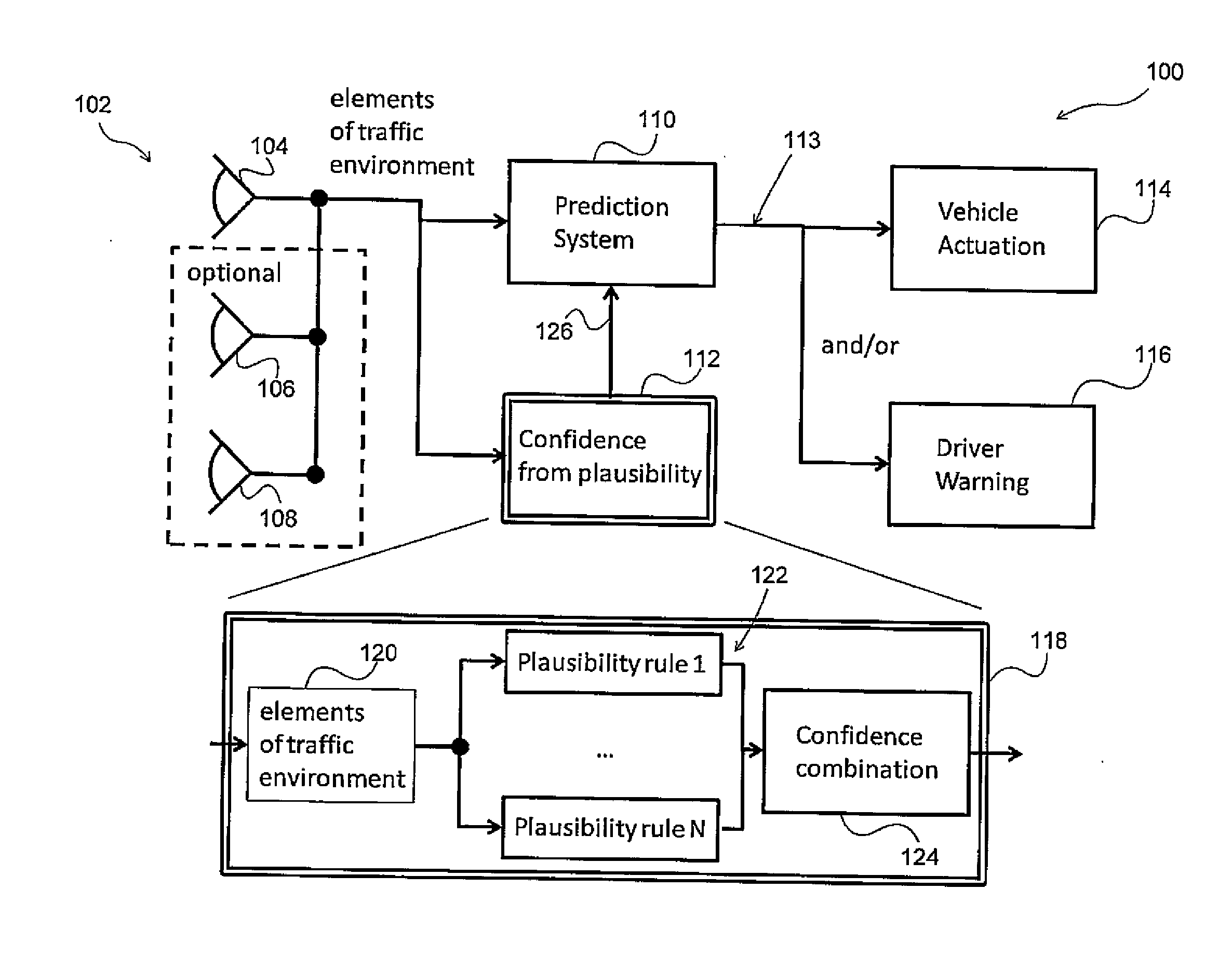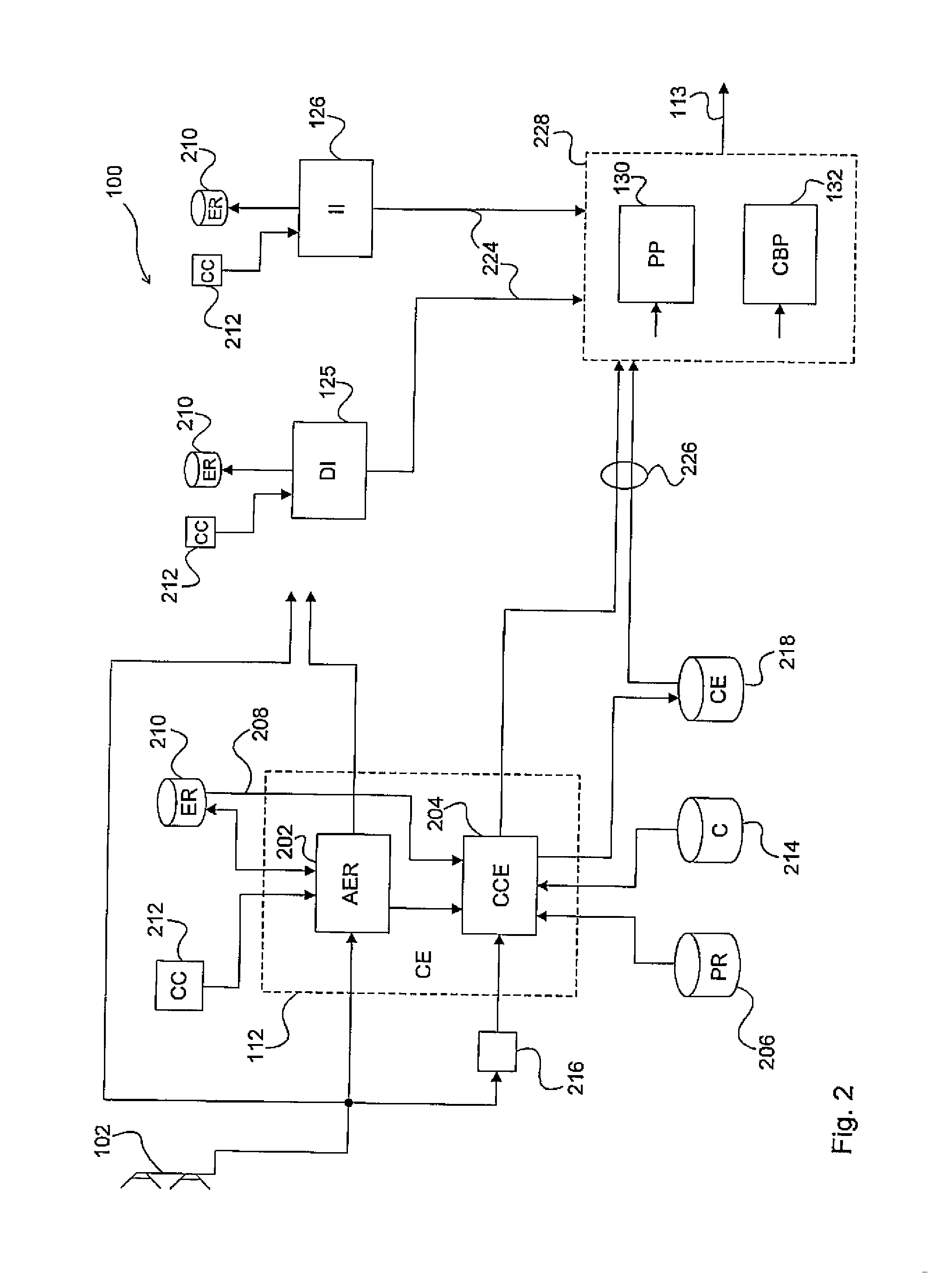Confidence estimation for predictive driver assistance systems based on plausibility rules
a driver assistance and confidence estimation technology, applied in the field of driving assistance systems, can solve the problems of sensor systems that are prone to errors, misdetection, late detection, etc., and achieve the effect of low cost and more reliable decisions
- Summary
- Abstract
- Description
- Claims
- Application Information
AI Technical Summary
Benefits of technology
Problems solved by technology
Method used
Image
Examples
Embodiment Construction
[0070]FIG. 1 illustrates as a high level overview an embodiment of a driving assistant system 100 of a vehicle. The system 100 can be assumed to be implemented on at least one electronic control unit (ECU) of the vehicle and programmed software / firmware functioning thereof. The following discussion will however focus on functional aspects for sake of conciseness and therefore details of hardware / software implementations will mostly be omitted. Further, the figures depict only those components which presently appear to be of relevance for one or more aspects of the invention.
[0071]Sensor equipment 102 of the vehicle includes one or more sensor systems 104, 106 and 108, which provide sensor data to, amongst others, a prediction subsystem (PSS) 110 of driving assistant 100. The term ‘host vehicle’ refers to the vehicle hosting the sensor equipment 102 and driving assistant 100. In case of sensor data received from other vehicles or road-side communication stations such as in a Car2X en...
PUM
 Login to View More
Login to View More Abstract
Description
Claims
Application Information
 Login to View More
Login to View More - R&D
- Intellectual Property
- Life Sciences
- Materials
- Tech Scout
- Unparalleled Data Quality
- Higher Quality Content
- 60% Fewer Hallucinations
Browse by: Latest US Patents, China's latest patents, Technical Efficacy Thesaurus, Application Domain, Technology Topic, Popular Technical Reports.
© 2025 PatSnap. All rights reserved.Legal|Privacy policy|Modern Slavery Act Transparency Statement|Sitemap|About US| Contact US: help@patsnap.com



